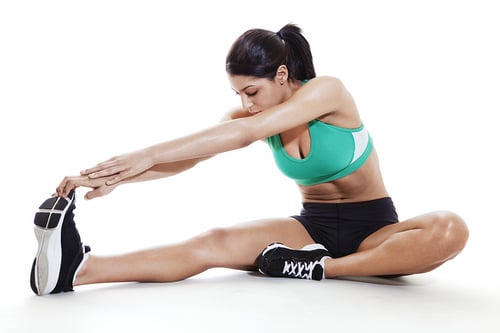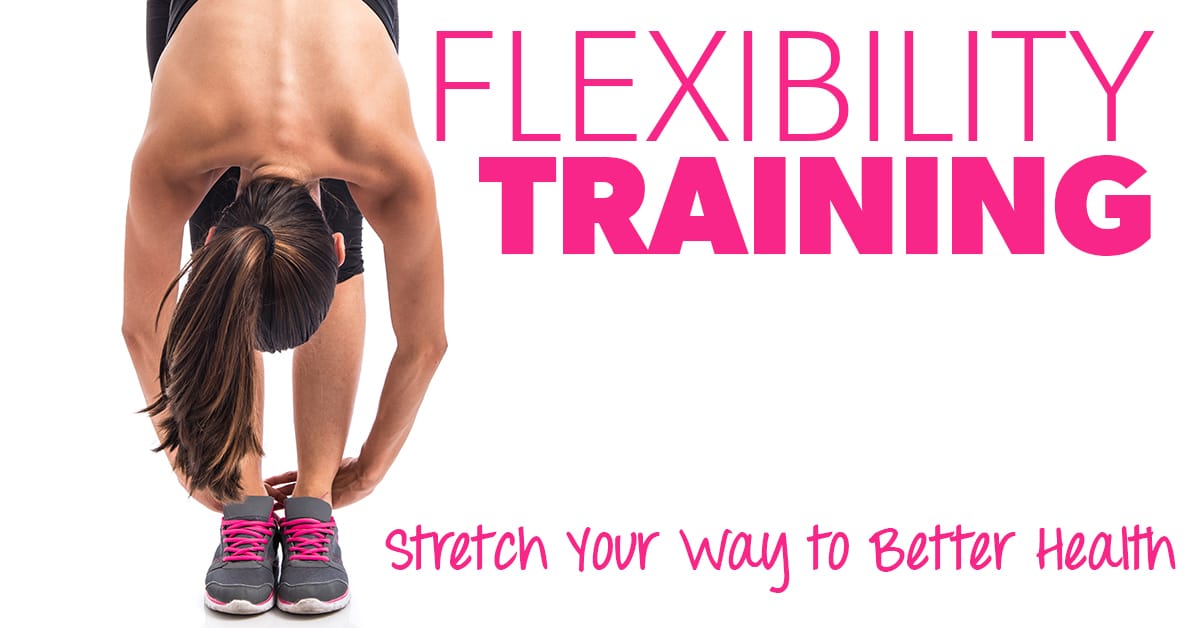Let’s face it. If you’re trying to lose weight, you are quite likely spending all of your time performing cardio and strength training. Most of us are usually in a hurry to fit in our workouts, and we want to get the most bang for our buck. But beware! Glossing over stretching can lead to injury, and completely sideline you from working out. Though important, flexibility training is probably one of the most undervalued component of physical fitness.
Flexibility training increases the the body’s range of motion. With flexibility, a person’s athletic performance is enhanced, and the risk of acquiring injuries greatly reduced. Stretching also speeds up metabolism by improving blood flow into the different internal organs and muscles. Flexibility training helps lengthen the muscle fibers, facilitate ease of movement, while improving muscle recovery and strength. Flexibility training may also reduce muscle soreness, lower back pain, improve coordination and posture, and ease stress and anxiety in one’s life. In addition to these health benefits, various medical studies suggest that regular stretching enables the body’s internal organs to function properly because of the improved blood flow. Are you sold yet?
To optimize your workouts, and boost your flexibility, you may want to consider the following pattern to your workout.
- Start with a Warm-Up. Five to ten minutes of brisk walking or jogging should do the trick. These exercises may loosen up the muscle, improve blood flow, and prepare your body for flexibility training.
- Static Stretching. Do not bounce (ballistic stretching) when performing stretches. Medical experts suggest that ballistic stretching may cause immediate and residual pain. In the long run, it could lead to serious muscle damage. Try to hold your stretches for at least 15-30 seconds to achieve long term flexibility benefits. Stretch only to the point where mild muscle tension is felt. If there is pain, then you might be doing it wrong. Move into each pose gradually and exhale while doing it.
- Do your Thing. Cardio, strength training, both? After properly warming up and stretching your muscles, your body is primed for exercise. Now is the time to follow your fitness plan to crush calories and build muscle.
- Cool Down. Flexibility training should also be performed after your workout to return the muscles to their resting stage. Stretch gradually, and listen to your body. Remember to stop if you feel pain and ease into a new pose.
- Pat Yourself on the Back. That’s it! After a few tweaks, you are on your way to a better body and safer workouts.
A well-planned flexibility training program can improve fitness and overall health, regardless of age. Your workouts should not be done hastily- there are no shortcuts to physical fitness. Take the time to warm up and stretch before and after your exercise session and reap the rewards of improved performance and fewer injuries.
What are your favorite stretches or flexibility poses? Tell us in the comments!






